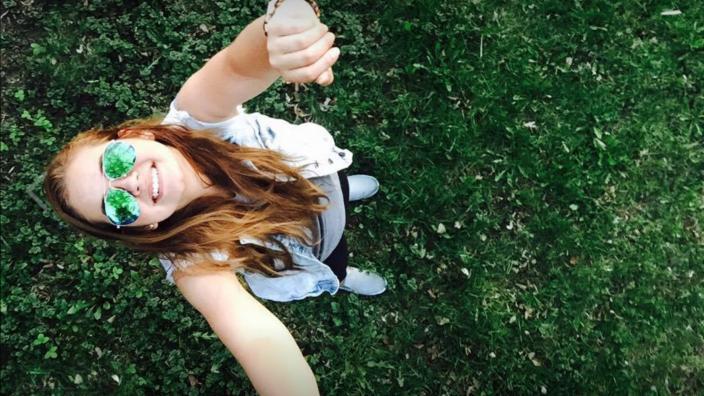María José Gomez Quijano, or Maria Gomez, as she is known at UMD, grew up surrounded by animals. Her father and mother were veterinarians in Bogata, Colombia, and it was often Maria’s job to feed the small animals. As a child, she sometimes nursed puppies and kittens back to health. As she grew older she became an assistant on tasks such as suturing and surgery.
She watched her parents bandage wounds, set broken bones, and help care for sick and elderly animals. Without even recognizing it, she watched them follow scientific methods, taking meticulous notes and keeping detailed files on the animals they treated. She observed them carefully charting weight, age, sex, and physical condition before administering an antibiotic or immunization injection.
Now, as a cell and molecular biology major, a world away at UMD in Duluth, she is following her parents example.
María is using scientific methodology as she works on a NSF-funded national study on local adaptation in white clover, and conducts her own independent study of clover in Duluth. “It’s a genetic study, and I since I was a child, I dreamed of working in genetics,” she says. “Here’s the way it works. White clover grown from warm climates releases cyanide when a leaf is damaged. We are trying to find out how much cyanide white clover will produce in a cold climate like Duluth.”
During the 2016-17 summer and school year, Maria traveled to the UMD Research and Field Studies Center daily to take care of the clover plants and gather data for the NSF clover project. This year she is supervising other students who are working on the NSF project, and now she is also using lab techniques to study the cyanide production levels of Duluth clover plants that grow from the lakeshore to the top of the hill.
Maria’s advisor, Dr. Briana Gross, an assistant professor in the Department of Biology, is leading the UMD component of the NSF-funded clover study. The nation-wide project was developed and funded by Dr. Kenneth Olsen at Washington University in St. Louis, Missouri. In this project, genetically identical plants from different regions are being grown and measured over multiple years in Duluth, Minnesota, St. Louis, Missouri, and Gainesville, Florida, to understand how plants withstand vastly different climates.
Maria was one of the first students to work with Dr. Gross to set up the UMD component of the study in the spring of 2016, and has worked on the project ever since. “This project is interesting because it helps us understand how plants adapt to different climates," said Dr. Gross. "It’s also very valuable because many UMD students have had a chance to work on data collection during the process. Maria has been a huge help on the project since the day the plants went into the ground.”
After working on the national project, Maria became interested in clover plants that were native to Duluth. Working with Dr. Gross, Maria developed a project that combined collecting plants from natural settings and using lab techniques developed by Dr. Olsen and a group of science teachers to measure cyanide production.
She is currently conducting this independent research project due to an award through an Undergraduate Research Opportunity Program (UROP). Maria is measuring cyanide in clover across Duluth, and determining if the change of elevation and the influence of Lake Superior have an effect on clover cyanide production. She may even bring the study to one of the national UROP conferences or the Botany Conference in 2018.
Science is only one part of Maria’s UMD life. She has recently designed a new program for incoming international students. “The aim is to help them adapt to American culture faster and reduce their mental pressure,” she says. “It also provides them a comfortable place to share their experiences.” In her new role as UMD international Circle Program planner she helps present several seminars each month, coordinates career services, counseling services, and fun events.
Like so many people, Maria’s path is not a straight line. “Volunteering for the International Club helped me realize how important communication is in making an impact on people from different cultural backgrounds,” she says. As a result, she has added communication as her second major. Her ultimate goal is to take her science background and communication skills and pursue a career in genetic counseling or research.
“When I received a scholarship to come to UMD, I thought I was the luckiest person in the world,” she says. “Now that I’m here, I really appreciate what UMD provides for me, and I want to try my best to give back to UMD.”
